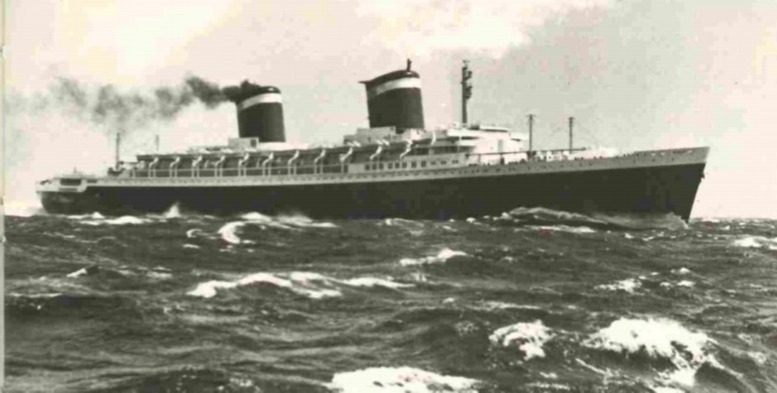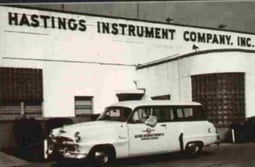 The early part of the 1950’s was prosperous for Hastings due in part to the demand for the Raydist and large military contracts as a result of the Korean War. Sales nearly tripled between 1950 and 1953 and there were almost 200 employees. Hastings had outgrown its space yet again and expanded to a 14,000 square foot building on Newcomb Avenue (current day location for Teledyne Hastings). The building was originally used as a car barn for street cars, then as a World War I armory and eventually as a manufacturing plant for ladies clothing.
The early part of the 1950’s was prosperous for Hastings due in part to the demand for the Raydist and large military contracts as a result of the Korean War. Sales nearly tripled between 1950 and 1953 and there were almost 200 employees. Hastings had outgrown its space yet again and expanded to a 14,000 square foot building on Newcomb Avenue (current day location for Teledyne Hastings). The building was originally used as a car barn for street cars, then as a World War I armory and eventually as a manufacturing plant for ladies clothing.
With the new location, other changes were happening as well. Hastings entered into a joint venture to supply Raydist services for the petroleum industry in the Gulf of Mexico thus creating Offshore Raydist, Incorporated. Another company was formed out of Hastings at this time, Raydist Navigation Corporation (RNC). RNC was set up to handle the leasing of Raydist equipment outside of the Petroleum industry.
During this period, most of the focus was on Raydist and trying to establish itself in new fields. One area was to have the Raydist on the S.S. United States. This superliner promised to be the fastest passenger liner in the world and would serve as a troop transport in the event of war. Because of personal relationships, Hastings could test and prove that Raydist was the superior system of conducting the tests at a measured-mile course. The test would use a specially-designed buoy which could be cast overboard and allowed to float freely during the trials. The relay equipment would be installed in the buoy, while the S.S. United states would carry the master station. Raydist would then record the liner’s speed as it steamed directly toward or way from the buoy. The tests proved to be successful and resulted in the Raydist being approved for use on the S.S. United States. This success lead to many other shipyard opportunities for Hastings. Within a few years, Raydist dominated the sea trial business in the United States.

Raydist was also gaining momentum in the Hydrography and oil prospecting industry due to positive publicity from the Norfolk Corps of Engineers. This publicity resulted in the first foreign Raydist sale in early 1951 to be used in charting the waters off Mozambique in southeast Africa.
During this time, Hastings completed a Raydist system for the All-Weather Flying Division of the Air Force. It was to be used at Wright-Patterson Air Force Base in Dayton Ohio to test the accuracy of radar and other blind landing systems. Later that year, an automatic plotting board was developed to supplement the Raydist system. The demonstration of this new product was a big event. The board plotted a plane’s path as it performed skywriting maneuvers spelling HICO across the sky.
 A small percentage of Hastings business during the early 1950’s was for instrument sales. The most important of these products were the air-meters, vacuum gauges, flow meters, accelerometers and an electronic standard cell. In order to grow this part of the business, Hastings decided to set up a manufacturer’s representative program. By the end of 1953, Hasting’s was looking forward to seeing this manufacturer’s representative program vastly increasing instrument sales.
A small percentage of Hastings business during the early 1950’s was for instrument sales. The most important of these products were the air-meters, vacuum gauges, flow meters, accelerometers and an electronic standard cell. In order to grow this part of the business, Hastings decided to set up a manufacturer’s representative program. By the end of 1953, Hasting’s was looking forward to seeing this manufacturer’s representative program vastly increasing instrument sales.
(Image on right is the first Manufacturer Representative's car outfitted with Hastings products.)
For more information on Teledyne Hastings be sure to visit our website www.teledyne-hi.com or contact us
Information for this blog was derived from “The Story of Hastings-Raydist” book by Carol Hastings Sanders 1979

